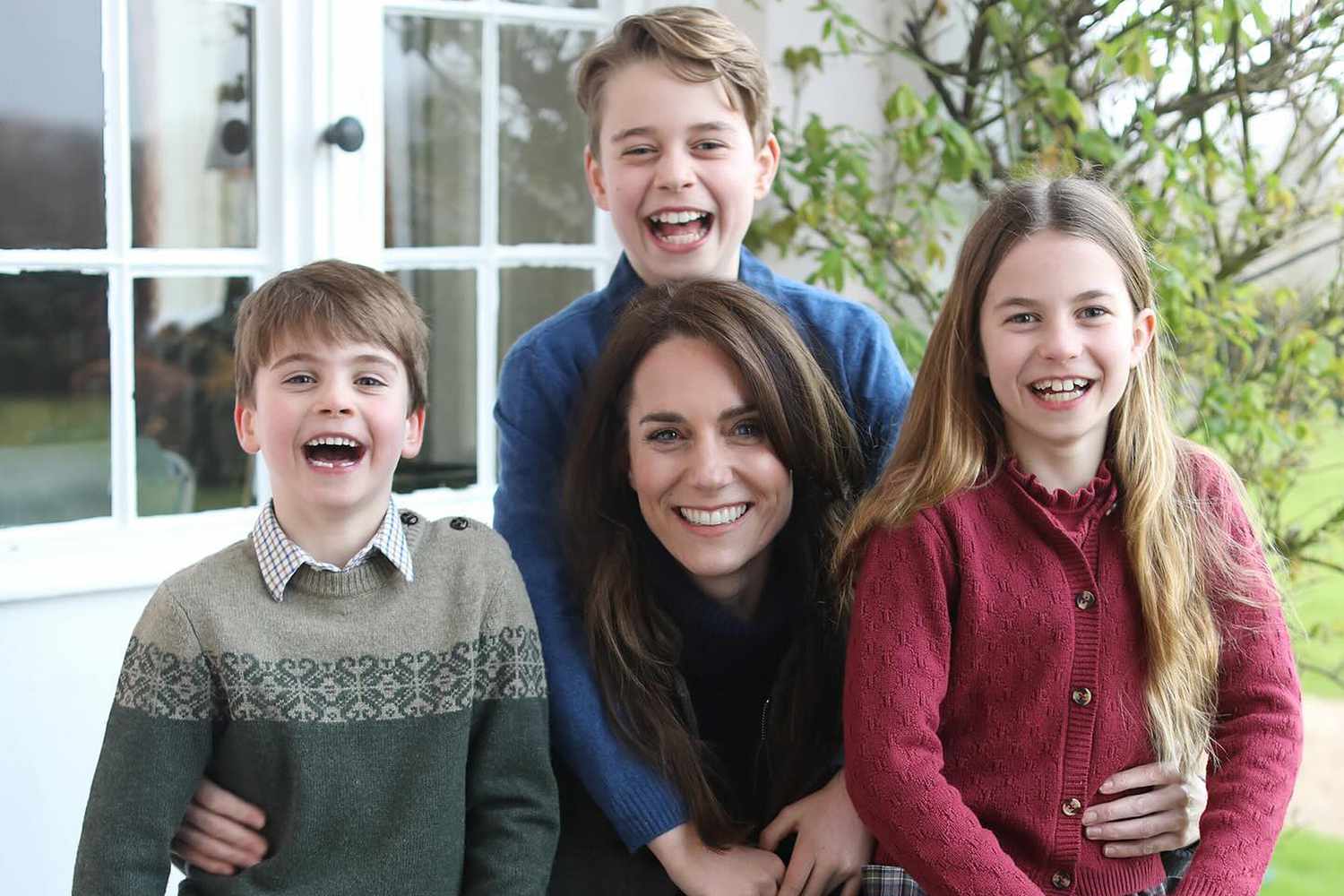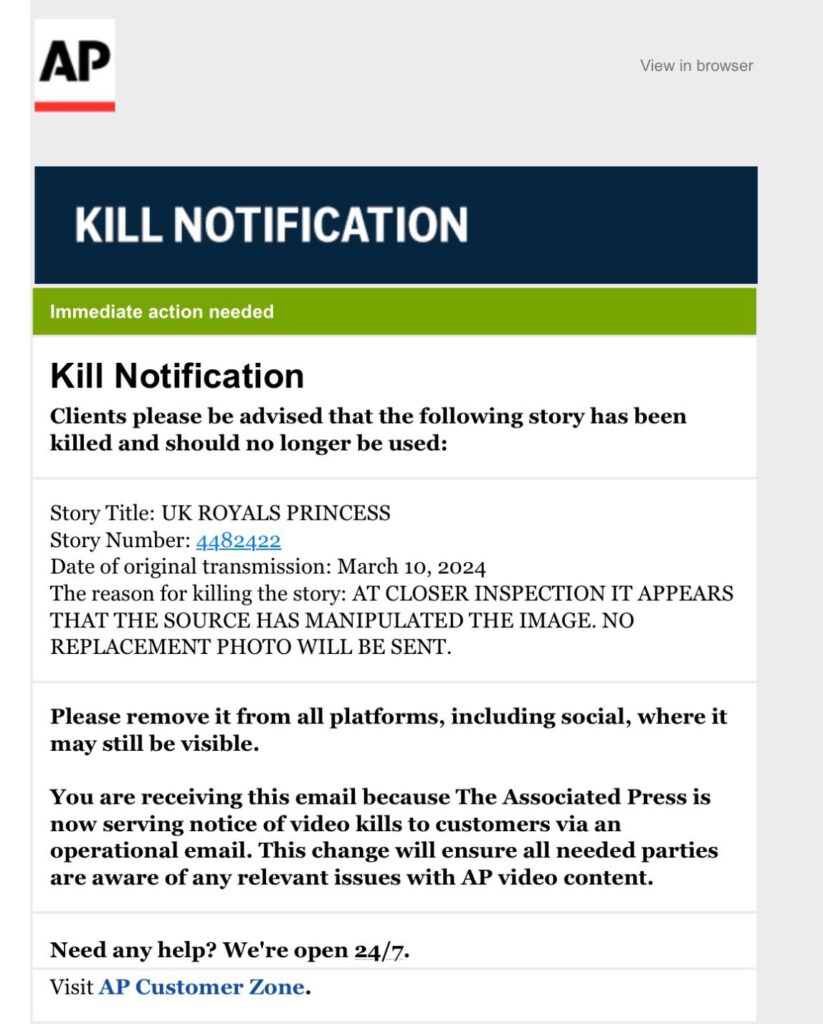On March 10, 2024, the official Instagram account for the Prince and Princess of Wales posted an image of Kate Middleton and her three kids for Mother’s Day in the UK. This photo was the princess’s first public image since December 2023, and was subsequently covered by outlets all over the world. However, what was seemingly a sweet family picture ended up under immense scrutiny as people began identifying evidence that the image was photoshopped or possibly generated by AI. This also happened amidst a lot of online chatter regarding the princess’s whereabouts – and even conspiracy theories that something malicious has happened to her, prompting people to dub the bizarre situation #KateGate. Just one day after gracing hundreds of publications, major media outlets like the AP and Reuters issued a kill notification on the image.
While the Royal Family, by the time of writing, has not responded to the kill notification, they did share the following tweet:
Like many amateur photographers, I do occasionally experiment with editing. I wanted to express my apologies for any confusion the family photograph we shared yesterday caused. I hope everyone celebrating had a very happy Mother’s Day. C
— The Prince and Princess of Wales (@KensingtonRoyal) March 11, 2024
The response garnered even more backlash; many voiced skepticism that Kate photoshopped the image herself or authored the tweet, and called for the original, undoctored photo.
With this confusion at the forefront of the media, here are three PR lessons we’ve learned.
Be aware of your audience
This is of paramount importance, no matter if you are a small organization or a group as visible as the Royal Family. It is especially key in relation to this incidence, because the Royal Family’s audience – billions of people on an international scale – has been speculating about the princess’s whereabouts for months before the image was released. There is a lack of trust between the public and the Royal Family, so their audience is already wary of anything they put out to the public. This, coupled with the large number of people invested in this story, set the ground for any discrepancies, such as the alterations found in this image, to be immediately called out.
The Royal Family’s audience expected two key things: authenticity and honesty. They did not receive either. As a result, the family lost control of the narrative as the public began demanding another, current picture of Kate, and expressed outrage toward the family for spreading disinformation. While an extreme example, this incident underscores the reality that anyone in the public eye needs to be more than just aware of their audience and its expectations, they have to live up to them as well. .
Proof everything you put out
This is a key pillar of public relations, especially in the age of fake news, misinformation, and disinformation – entities must proofread all public communications to ensure accuracy. Especially in this case, in which the Royal Family is already under scrutiny, this is a great reminder that anything shared with the public needs to be meticulously reviewed and fact checked.
As this case shows, proofreading extends beyond text in the digital age, as multimedia also need to be meticulously checked any errors or inaccuracies. The failure to do so in this instance (people across the world identified at least 16 inconsistencies in the image) has only led to a worse crisis for the Royal Family: public outcry for the unedited image or another recent image of Kate that is not being met or assuaged.
Respond quickly but thoughtfully
The “golden hour” in PR is the first 60 minutes of a crisis. It is a time to evaluate what is going on and identify the best way to respond that demonstrates accountability and respect to the stakeholders involved, while also regaining control of the narrative. This incident is a perfect example of why this is necessary and the fallout that happens when it isn’t followed; it took the family close to 24 hours to respond to the photoshop allegations. In that time, theories spiraled out of control, making it tougher for the Royal Family to control the situation.
While speed is important, thoughtfulness is equally crucial. As #KateGate shows, an ill-considered response can do more harm than good. As demonstrated earlier, when the family did finally respond, many people did not believe that Kate authored the response, let alone believe that she was the one who edited the image. This is a great reminder for PR practitioners: responding thoughtfully involves considering your audience and identifying how to best share the message so that they will receive it in the way you want them to.



